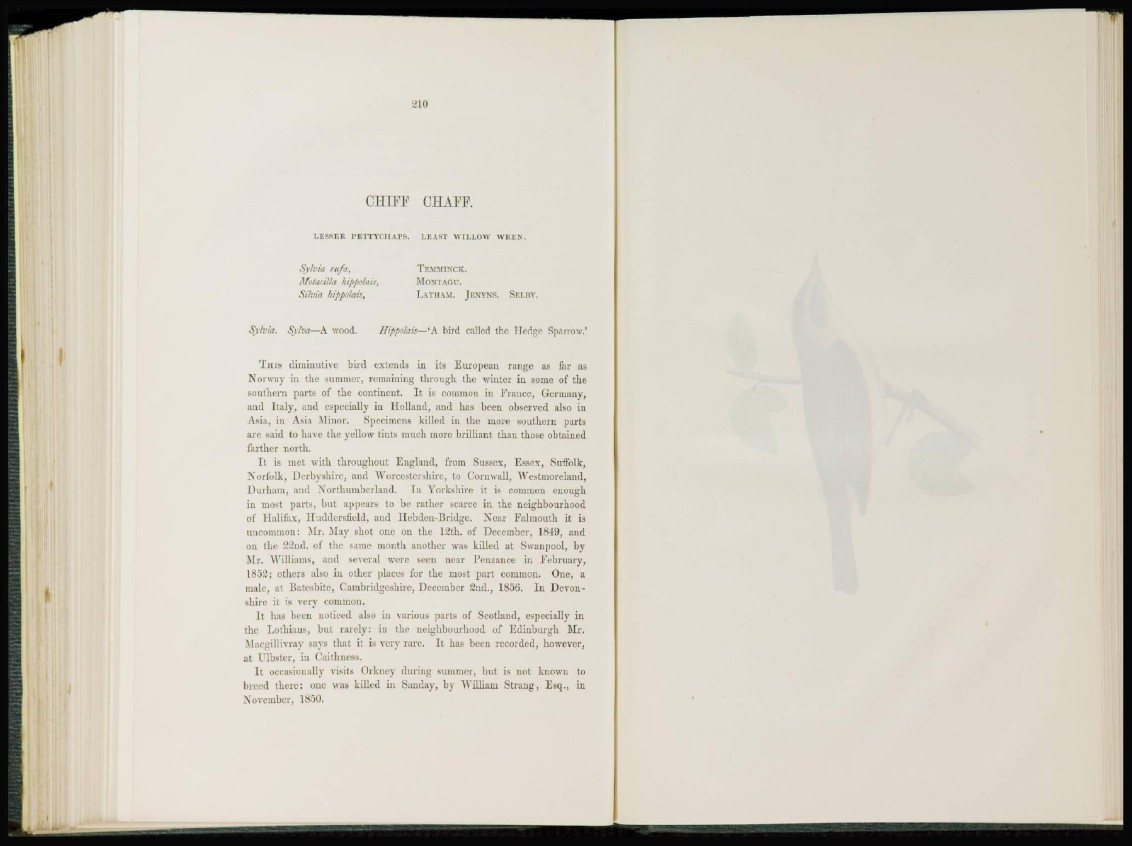
CHIP!1 CHAIT.
L E S S E R P B T T T C H A P S . LEAST "WILLOW W R E N .
Svlria rti/a, TEMMINCK.
MataciUa hippolais, MOXTAGU.
Silvia hippolais, LATHAM. JENVNS. SELHY.
Sylvia. Sylva—A wood. Hippolais—'A bird called the Hedge Sparrow.'
T H I S diminutive bird extends in its European range as far as
Norway in the summer, remaining through the winter in some of t he
southern parts of the continent. It is common in France, Germany,
and Italy, and especially in Holland, and has been observed also in
Asia, in Asia Minor. Specimens killed in the more southern parts
are said to have the yellow tints much more brilliant than those obtained
farther north.
I t is met with throughout England, from Sussex, Essex, Suffolk,
Norfolk, Derbyshire, and Worcestershire, to Cornwall, Westmoreland,
Durham, and Northumberland. In Yorkshire it is common enough
in most parts, but appears to be rather scarce in the neighbourhood
of Halifax, Huddersfield, and Hebden-Bridge. Near Falmouth it is
uncommon: Mr; May shot one on the 12th. of December, 1849, and
on the 22nd. of the same month another was killed at Swanpool, by
Mr. Williams, and several were seen near Penzance in February,
1852; others also in other places for the most part common. One, a
male, at Patesbite, Cambridgeshire, December 2nd., 1856. I n Devonshire
it is very common.
It has been noticed also in various parts of Scotland, especially in
the Lothians, but rarely: in the neighbourhood of Edinburgh Mr.
Macgillivray says that it is very rare. It has been recorded, however,
at Fibster, in Caithness.
I t occasionally visits Orkney during summer, but is not known to
breed there: one was killed in Sanclay, by William Strang, Esq., in
November, 1850.